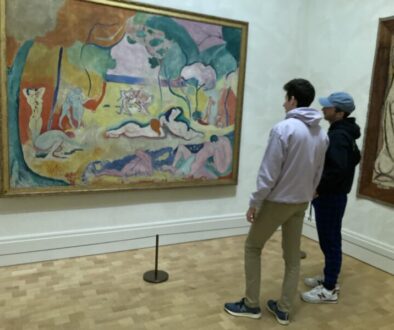The Influence of People and Places

“Food tells stories, and sometimes the history makes you appreciate a certain cuisine a little more.”
Millie Peartree
I’m a chef who also happens to write. The two crafts are not as disparate as they may seem at first. What I really am is a storyteller; sometimes I tell the story with words, sometimes with texture, flavor, and ingredients. This became a revelation to me in the last year as I began the process of opening a new restaurant in Cape May, The Cricket Club.
What story was this menu going to tell? The building dates back 140 years and through several incarnations. The Kulkowitz family and the Mad Batter tell the story of the Cape May renaissance of the 1970s. My story tells about an odyssey from a chubby food-obsessed kid in central Jersey through culinary school in Rhode Island to a journeyman cook in ski resorts and sleepy western slope towns in Colorado. This menu wasn’t going to be a novel with a beginning, middle, and end; rather an anthology of vignettes and vinaigrettes, seasoned and spiced with the experiences and influences of 40 years in the kitchen.
That experience for me has come from the books I’ve read, the places I have been, and the people I have known. I think most every chef traces their passion back to a mom and/or a grandmother who cooks. I was blessed with both. Two dishes on the menu go directly back to my earliest days in the kitchen with my maternal grandmother: fried tomatoes, and the oyster stew. My mom-mom would make fried tomatoes with a pan cream gravy. The tomatoes made the arduous journey of several hundred feet from the backyard garden to cast iron skillet. Farm to table wasn’t a trendy gimmick back then, it was just the way it was. The intimacy of knowing the provenance of your ingredients was instilled at an early age.

Another lesson learned in my grandmother’s kitchen was that some food required certain ingredients and accompaniments. Oysters came from the fish market, and the stew had to be served with oyster crackers. Not just any oyster cracker—they had to be O.T.C. Crackers. This presented a problem since the brand recently stopped production. The tiny saltine knock-off oyster crackers wouldn’t suffice. The solution: make my own.
Books have always been a part of my life. Reading is essential to learning and to recharging one’s soul. My mom has an amazing collection of cookbooks that became my portal of learning. These dog-eared, sauce-stained books fueled my earliest kitchen experiments, some with better results than others.
Through books I first met Jacques Pepin and Julia Child, not knowing then that I would one day meet them in person. Over the years I have received many books as gifts, and they are all cherished. Two books were particularly transformative: Cooking with the New American Chefs and The Charlie Trotter Cookbook. The first showed me there was a new path forming in the American culinary scene. This was the 80s, and names like Waters, Tower, and Puck were blazing trails with California cuisine. The New York scene was celebrating the foods of the Hudson Valley and the garden state with chefs like Barry Wine, Jonathan Waxman, and Larry Forgione. I didn’t need a French accent to become a chef, just imagination.

The first Charlie Trotter book was my Beatles-meet-Dylan moment. The pictures were larger than life with vibrant colors, and the flavors and textures leapt off the page and seared into my brain like a steak hitting a smoking cast iron skillet. I still go back to that book 30 years later and marvel at how cutting-edge Chef Trotter was back then and still is today. Books taught me that words and ideas can become visualized, and imagination was the first step in creating. Charlie Trotter’s horseradish Caesar salad with polenta croutons and chocolate cherry bread pudding still make appearances in my kitchens and menus.
History and sense of place and belonging have always been central themes in my menus. The Cricket Club presented some challenges in that arena. Restaurants come and go along the shore much like the tides. Some leave gaping holes in a community. Taking over the space occupied by the legendary Merion Inn and its mystique has been a daunting task. People were angry at the loss of their beloved potato cups and other signature dishes. Trying to copy or imitate the Merion was never an option for me. Food memories are more powerful than the actual food itself. The loaded potato muffin was created as an homage (not a replacement) to the Merion potato cup and mini muffins they once served.
The Roman god Janus looks backwards and forwards. As we begin a new year of Cape May Magazine, try these recipes from the past and the present. Loaded potato muffins, corn and clam chowder with homemade oyster crackers, cauliflower grits with peri peri chicken, and lobster thermidor, one of my first kitchen disasters inspired by Julia Child.
Recipes from this issue







